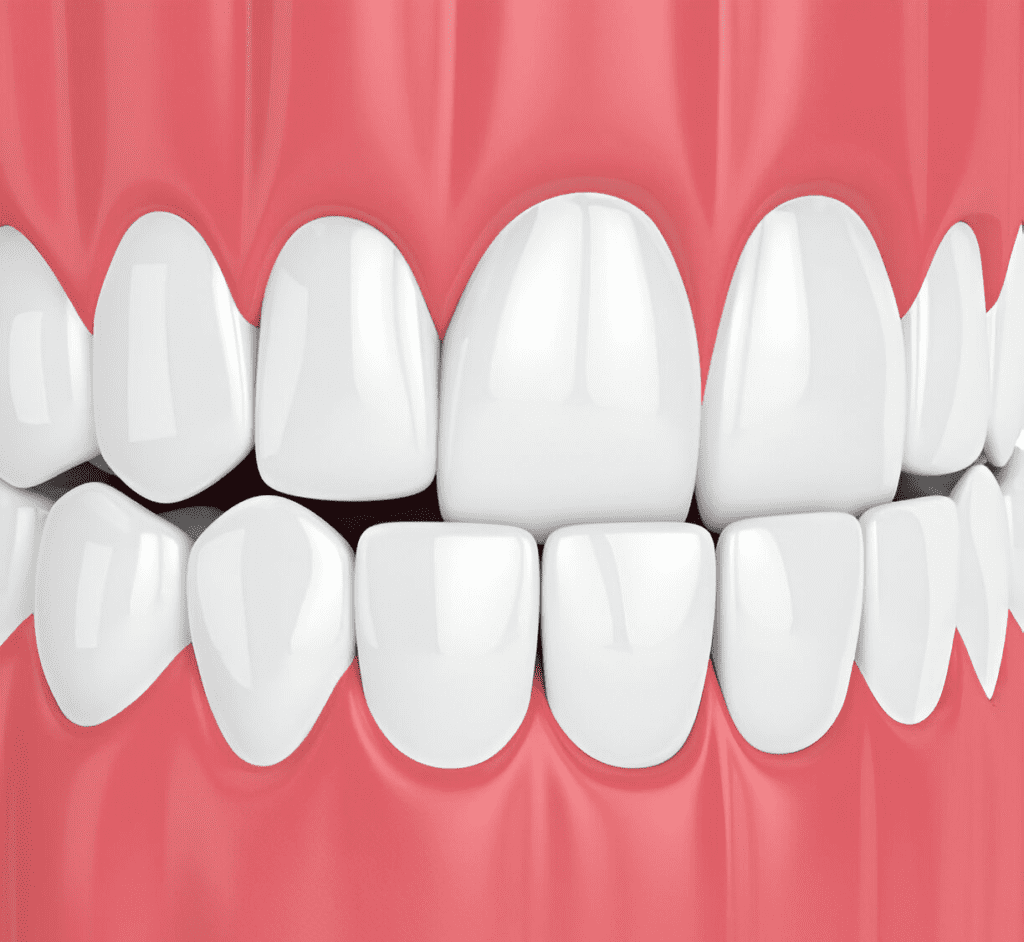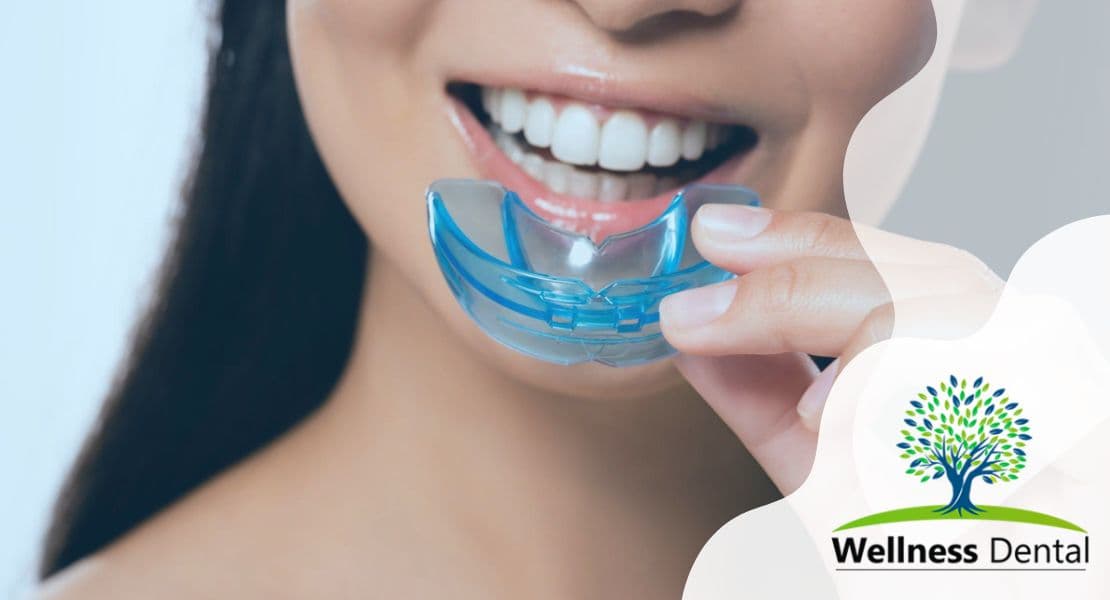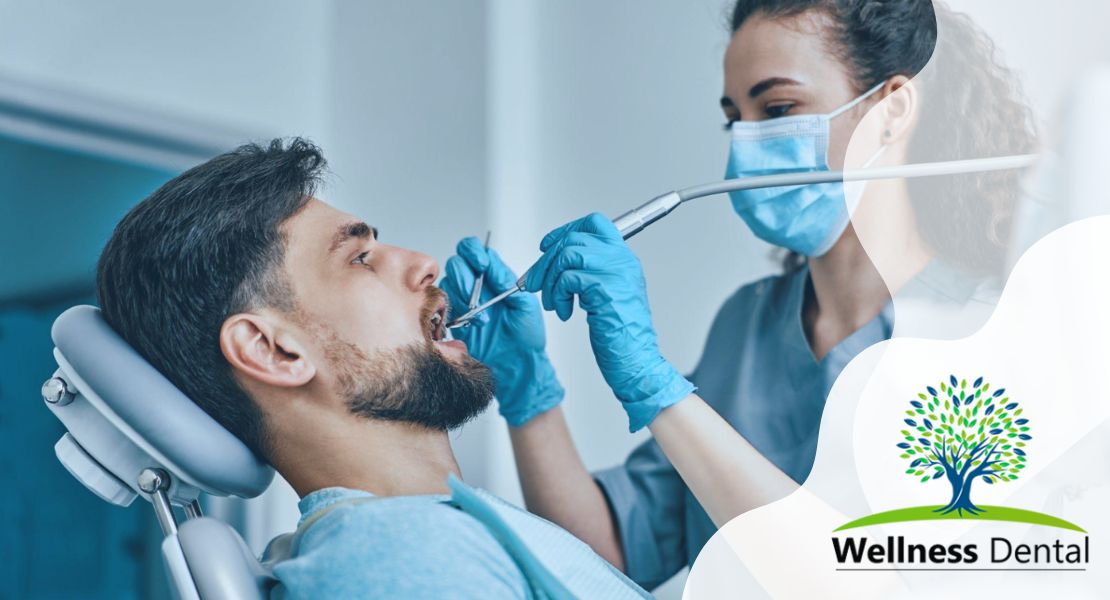When your smile reflects an irregularity, it can influence more than just aesthetics—it can signify a deeper dental issue. An underbite, characterized by the lower teeth jutting beyond the upper, can have a broad impact on both health and confidence. This condition, while common, puzzles many on its origins and implications.
Understanding an underbite starts by exploring its roots, which can stem from genetic predispositions or formative habits like thumb-sucking. Recognizing the symptoms is crucial; an altered facial shape, chewing challenges, and speech impediments can all signal an underbite’s presence.
Causes of Underbite
An underbite, known in dental terminology as a Class III malocclusion or prognathism, is a condition where the lower teeth project out further than the upper teeth due to misalignment of the jaw. This can lead to a host of dental conditions and can affect oral health, leading to issues like gum disease, and tooth decay, and can be associated with sleep apnea.
While mild underbite cases may be primarily a cosmetic issue, severe underbite can lead to more serious health problems, including permanent damage to tooth enamel and increased difficulty in chewing and speaking. Identifying the causes of an underbite is essential for choosing the correct treatment options.
Genetic Factors
Underbites are often hereditary, passed down from one generation to the next. Genetic factors can predetermine the size and shape of the jaw and teeth, making some individuals more prone to developing an underbite.
A family history of underbite or related dental conditions might increase the likelihood of an individual presenting this malocclusion. Consulting with an oral surgeon or maxillofacial surgeon can help in understanding the extent to which genetics contribute to a person’s specific condition.
Childhood Habits and Oral Development
Certain childhood habits can negatively impact oral development and contribute to the formation of an underbite. These behaviors may include prolonged use of a pacifier, thumb sucking, bottle feeding beyond infancy, and tongue thrusting, which can all exert undue pressure on the teeth and jaw, influencing their growth patterns.
It is crucial to monitor these habits and address them early on to prevent the development of an underbite or to reduce its severity before permanent teeth set in. Interventions may involve orthodontic treatment with devices like palatal expanders, which can adjust the width of the upper jaw to promote proper alignment.
To comprehensively address the topic of underbite, understanding its various causes, including genetics and childhood habits, is vital. Recognizing these causes facilitates effective underbite treatment and prevention of related oral health issues.
Symptoms of Underbite
Recognizing the symptoms of an underbite is crucial for early intervention and treatment. It goes beyond mere aesthetic concerns—affecting overall oral health. Some of the common symptoms of an underbite include difficulty biting and chewing, which can consequently lead to nutrition complications.
Many individuals may also experience discomfort or pain due to the misalignment of their jaw, which might manifest as chronic jaw or temporomandibular joint (TMJ) pain. Furthermore, excessive tooth wear, especially on the lower front teeth, can be indicative of an underbite as the misaligned teeth may grind against each other disproportionately.
Appearance of Underbite

The visual aspect of an underbite is often the most noticeable. It is characterized by the protrusion of the lower jaw, which causes the chin to appear more prominent. This can create a distinct facial profile that is different from the typical alignment of the jaws. An underbite often results in the lower teeth overlapping the upper teeth and may cause changes in the facial structure over time if not addressed.
Jaw and Bite Problems
An underbite can lead to several jaw and bite problems. Patients with underbites may find it difficult to fully close their mouths or might have a bite that feels uncomfortable or imbalanced. This misalignment can strain the muscles and joints of the jaw, increasing the risk of developing TMJ disorders. Additionally, an underbite can contribute to uneven jaw growth, exacerbating the problem if not treated promptly and properly.
Breathing and Speech Difficulties
Individuals with an underbite may face challenges related to breathing and speech. Mouth breathing is a common issue with underbite due to the difficulty of closing the lips over protruding teeth comfortably. This can increase the risk of respiratory infections and potentially contribute to the development of sleep apnea.
Moreover, speech difficulties such as articulation problems or lisps can occur, since the alignment of teeth plays an important role in the formation of certain sounds. Addressing an underbite can help reduce these symptoms and improve overall quality of life.
When noting these conditions, it’s important to understand that they do not just disappear and most often require professional medical attention for correction.
Diagnosis of Underbite

To accurately diagnose an underbite, a three-fold process involving a comprehensive dental examination, imaging techniques, and consultations with specialists is employed. The course of action aims to determine not only the presence of an underbite but also its severity and underlying causes, which are essential for crafting a custom treatment plan.
Dental Examination
The initial step toward diagnosis of underbite lies in a thorough dental examination. During the visit, a dentist or orthodontist will assess the patient’s oral health, checking for signs of gum disease, tooth decay, and the degree of misalignment of the teeth.
The dental professional will examine the patient’s bite and the relation between the upper and lower jaw to identify a bad bite or a severe underbite. They may also look for signs of wear on the tooth enamel, which could indicate excessive grinding due to misalignment.
X-rays and Imaging

To gain a comprehensive understanding of an underbite, dental X-rays and advanced imaging techniques are crucial. These diagnostic tools offer a complete view of the jawbone, tooth roots, and surrounding structures.
Panoramic X-rays, cephalometric projections, and 3D cone-beam computed tomography (CBCT) scans can reveal the extent of jaw misalignment and assist in planning potential underbite treatment options. This information is vital for evaluating whether orthodontic treatment alone is adequate or if jaw surgery might be necessary.
Consultation with an Orthodontist or Oral Surgeon
Following the examination and imaging, patients will typically consult with an orthodontist or oral surgeon specializing in correcting misaligned teeth and jaws. These professionals will analyze the diagnostic information, discuss the implications of untreated underbite such as permanent damage or the development of sleep apnea, and talk through various underbite correction possibilities—ranging from orthodontic treatment such as braces or palatal expanders to orthognathic surgery for severe cases.
This consultation is also an opportunity to address any patient’s concerns, discuss the potential for tooth extraction if necessary, and determine the prospects of achieving proper alignment through the recommended interventions.
By the end of these assessments, a multitiered perspective on the underbite condition is gained, and a clear path to correction can be outlined, bearing in mind the overall goal of restoring functionality and mitigating any associated health risks.
Treatment Options for Underbite
Correcting an underbite is key to enhancing oral health and overall well-being. A variety of treatment options are available depending on the severity of the underbite, the age of the patient, and the underlying cause of the jaw misalignment.
Orthodontic Treatment
Orthodontic treatment represents a common approach to correcting mild to moderate underbites. The objective is to move the upper teeth forward and the lower teeth backward, guiding them into proper alignment. This can be achieved through braces – traditional metal bands affixed to the teeth, connected by archwires that gradually shift teeth positioning over time.
Clear aligners are another option, offering a less noticeable solution for improving dental alignment. The duration and success of orthodontic treatment will depend on the severity of the underbite and patient compliance with care instructions.
Use of Palatal Expanders
Particularly in children and adolescents, palatal expanders can be effective for underbite correction. These devices are designed to widen the upper jaw so that the bottom and top teeth fit together better. They are typically fixed appliances, consisting of a screw that applies pressure on the plates of the palate, encouraging the bones to widen incrementally. Palatal expanders are most successful when used during a child’s growth period, as the upper jaw is more malleable.
Orthognathic Surgery
For severe underbites, where there’s a significant discrepancy between the alignment of the jaws, orthognathic surgery might be necessary. This surgical intervention repositions the jawbones to achieve a correct bite and facial harmony. The procedure often comes after a period of orthodontic treatment to optimize the placement of teeth before surgery.
A maxillofacial surgeon performs the surgery, and recovery can take several weeks, during which the patient must follow a strict diet and care regimen. The potential for a dramatic improvement in both function and appearance makes orthognathic surgery a compelling option for those with severe malocclusions.
Jaw Surgery
Jaw surgery, often part of orthognathic treatment, is a procedure aimed at correcting skeletal deformities that result in an underbite. Carried out under general anesthesia, the surgery involves cutting the jawbones and moving them into a more ideal position.
It can include surgery on either the upper jaw, lower jaw, or both. Screws, plates, or wires may be used to secure the jaws in their new position. The outcome is a more balanced appearance of the face and a proper bite, which can alleviate issues such as difficulty in chewing, speaking, and sleep apnea.
Tooth Extraction
In some cases of underbite, particularly when there is crowding, tooth extraction may be part of the treatment plan. Removing one or more teeth can create the necessary space for the remaining teeth to move into their correct positions.
This is often followed by orthodontic treatment to align the teeth and correct the underbite. Tooth extraction is a relatively straightforward procedure, but it’s important to consult with an orthodontist to ensure that it is the right step for the specific type and severity of underbite.
By evaluating each of these treatment options—orthodontic treatment, use of palatal expanders, orthognathic surgery, jaw surgery, and tooth extraction—patients and dental professionals can develop an effective treatment plan tailored to the individual’s needs. The goal of any underbite treatment is to achieve a functional bite and improve oral and overall health.
Non-Surgical Treatment for Underbite
Non-surgical options to address an underbite focus on correcting the misalignment of teeth and jaws through manageable, less invasive procedures. These methods are especially suitable for mild to moderate cases of underbite and can effectively improve oral health, potentially avoiding permanent damage to the jaw structure and tooth enamel.
Key approaches include the use of braces or other orthodontic appliances, modifying detrimental childhood habits, and taking timely measures during early developmental stages in children.
Braces and Orthodontic Appliances

Braces are the cornerstone of underbite treatment, often starting in the teenage years but available for adults as well. They apply continuous pressure to the teeth, gradually realigning them. There are several types of braces:
- Traditional Metal Braces: Strong and durable, using brackets and wires to adjust tooth position.
- Ceramic Braces: Functionally similar to metal braces but with tooth-colored or clear brackets for a less noticeable look.
- Lingual Braces: Placed behind the teeth, remaining out of view but requiring a more complex installation and maintenance routine.
- Clear Aligners: Removable and nearly invisible trays that are switched out every few weeks to continue teeth movement.
Orthodontic appliances may supplement the use of braces, including:
- Upper Jaw Expander: A device that fits across the upper palate and widens the jaw via a screw mechanism.
- Retainers: Used post-braces to maintain teeth position, can be fixed or removable.
- Space Maintainers: If premature tooth loss occurs, these keep the space open for permanent teeth to emerge correctly.
Correcting Childhood Habits
Corrective strategies for underbite often address childhood behaviors that can exacerbate the condition:
- Thumb Sucking: Discouraging this habit beyond the age of four can prevent forward pushing of the upper teeth, which may contribute to an underbite.
- Tongue Thrusting: Training to correct the habit of pressing the tongue forward against the teeth during swallowing.
- Mouth Breathing: Addressing any underlying issues causing mouth breathing, as it can lead to dental and facial abnormalities.
Intervening in these habits can prevent or lessen the severity of an underbite, and may include help from a pediatric dentist or orthodontist.
Early Intervention for Children
Intervening early in a child’s development can lead to better outcomes with less invasive treatments. This concept, known as interceptive orthodontics, may involve:
- Palatal Expanders: Broadens the upper jaw in growing children, helping the upper and lower teeth to better mesh.
- Growth Modification Devices: Utilized during growth spurts to help properly shape the jaw and bite alignment.
- Partial Braces: Often placed on the front teeth to correct an emerging underbite before all permanent teeth have come in.
In essence, the sooner a potential underbite is identified and treated, the more effective non-surgical treatments can be in correcting the issue and encouraging proper alignment and oral health.
It is essential for children to have regular dental check-ups, which can lead to early detection and treatment planning for underbites before they become more complex and potentially affect self-esteem or lead to complications such as gum disease or tooth decay.
Surgical Treatment for Underbite
When non-surgical methods are insufficient for correcting severe underbite cases, surgical treatment may be recommended. This is particularly true when the misalignment affects the jaw’s position and not just the teeth. Surgical intervention, such as orthognatic surgery, is aimed at correcting irregularities of the jaw bones and ensuring proper alignment. It’s important to note that while this can significantly improve oral health and function, it can also yield positive cosmetic effects.
Surgical treatment options may include:
- Jaw Surgery (Orthognathic Surgery): This is a common treatment for severe underbite and involves cutting and repositioning the jaw bones.
- Tooth Extraction: In some cases, removing teeth can provide the necessary space for the remaining teeth to be properly realigned.
- Severe Injuries Repair: For underbites resulting from trauma, surgical reconstruction may be necessary.
A maxillofacial surgeon typically performs these procedures in a hospital setting, and orthodontic treatment, like braces, may follow to ensure the teeth are moved into the correct positions post-surgery. This integrated approach can prevent long-term health issues such as sleep apnea, gum disease, and tooth decay that may be exacerbated by an uncorrected underbite.
Orthognathic Surgery Procedure
Orthognathic surgery is a precise and comprehensive approach that involves a series of steps:
- Diagnosis & Planning: Detailed images of the jaw via X-rays, 3D models, and advanced imaging techniques inform a well-devised surgical plan.
- Pre-Surgical Orthodontics: Patients may wear braces for a period before surgery to align teeth and prepare for jaw correction.
- Surgery: The procedure is performed under general anesthesia, and the jaw is repositioned according to the surgical plan. It often involves internal screws and plates to secure the jaw’s new position.
- Post-Surgical Orthodontics: Further alignment and adjustment of the teeth post-surgery ensure a functional bite and aesthetic appearance.
- Follow-Up Visits: Regular check-ups help to monitor healing and the success of the treatment.
Preparing for Jaw Surgery
Preparation for orthognathic surgery is critical. Here’s a checklist for prospective patients:
- Pre-Operative Assessments: Includes consultations with an orthodontist, oral surgeon, and possibly other specialists.
- Medical History Review: Sharing accurate health information with your surgical team to anticipate any issues.
- Dietary Adjustments: Planning for a post-operative diet that is mostly liquid and soft foods.
- Organizing Post-Surgery Care: Arranging for time off from work, help at home, and transportation following the surgery.
- Mental Preparation: Understanding the recovery process and setting realistic expectations for healing.
Recovery and Aftercare
Post-surgery, patients enter a critical recovery phase, which involves:
- Initial Healing: A hospital stay of 1-3 days is common, followed by a few weeks at home with swelling and discomfort managed by medications.
- Rest and Nutrition*: Adequate rest and proper nutrition with a modified diet are essential for recovery.
- Oral Hygiene: Maintaining a clean oral environment to prevent infection while being gentle around surgical sites.
- Follow-Up: Regular appointments with the surgical team to ensure the jaw is healing correctly.
Overall, successful underbite surgery may greatly enhance the quality of life, from improved biting and chewing to potentially elevated self-confidence. However, it’s a major procedure that requires careful consideration, and a thorough understanding of the entire process is important for patients considering surgical correction of an underbite.
Complications and Risks of Underbite Treatment
Underbite treatment, particularly when it involves surgery, is not without its set of complexities and risks. While the end goal is to achieve proper alignment for optimal oral health and aesthetics, patients must be aware of the potential for complications.
Nonsurgical treatments like braces or dental appliances also pose some risks, including discomfort and the potential for TMJ pain. For Orthodontic treatment, a risk is related to the development of tooth decay or gum disease if proper oral hygiene is not maintained around the brackets and wires.
Surgical treatments have more significant risks. Common side effects can include bleeding, swelling, infection, or a negative reaction to anesthesia. There’s also a chance that the outcome may not meet the aesthetic or functional expectations, and at times, nerve damage could result in a loss of sensation or numbness in the facial regions.
Risks and Side Effects of Orthognathic Surgery
Orthognathic surgery brings with it a list of inherent risks and potential side effects, which include, but are not limited to:
- Infection
- Blood loss
- Need for blood transfusion
- Adverse reaction to anesthesia
- Relapse of the jaw to its original position
- Permanent numbness or altered sensation in the lower lip and chin due to nerve damage
- In rare instances, damage to the jaw joint (TMJ)
- Difficulty in fully opening the mouth
Patients must have a clear understanding of these risks and discuss any concerns with their surgical team prior to the operation.
Potential Prolonged Treatment Duration
Another consideration when correcting an underbite is the potential for a prolonged treatment duration, especially if multiple and integrative approaches are utilized. Here’s a breakdown of stages and their possible durations:
| Stage | Duration |
|---|---|
| Pre-Surgical Orthodontics | 6-18 months |
| Surgery | 1 day, with weeks of recovery |
| Post-Surgical Orthodontics | 6-12 months |
| Follow-up Visits | Extended over years |
The timeline can be impacted by several factors, such as the severity of the underbite, the patient’s age, and how well the patient follows post-surgical instructions.
It’s crucial for patients to have realistic expectations about the length of treatment, as rushing the process can jeopardize the results and lead to further issues. Consistent follow-up visits are critical to monitor the progress and make necessary adjustments.






